Black And Decker MS700G Handleiding
Black And Decker
Schuurmachine
MS700G
Bekijk gratis de handleiding van Black And Decker MS700G (6 pagina’s), behorend tot de categorie Schuurmachine. Deze gids werd als nuttig beoordeeld door 59 mensen en kreeg gemiddeld 3.6 sterren uit 30 reviews. Heb je een vraag over Black And Decker MS700G of wil je andere gebruikers van dit product iets vragen? Stel een vraag
Pagina 1/6

General Safety Rules
WARNING: Read and understand all instructions. Failure to follow all instructions listed
below may result in electric shock, fire and/or serious personal injury.
SAVE THESE INSTRUCTIONS
Work Area
•Keep your work area clean and well lit. Cluttered benches and dark areas invite accidents.
•Do not operate power tools in explosive atmospheres, such as in the presence of
flammable liquids, gases, or dust. Power tools create sparks which may ignite the dust or
fumes. Use in well ventilated areas only.
•Keep bystanders, children, and visitors away while operating a power tool.
Distractions can cause you to lose control.
Electrical Safety
•Double insulated tools are equipped with a polarized plug (one blade is wider than the
other.) This plug will fit in a polarized outlet only one way. If the plug does not fit fully
in the outlet, reverse the plug. If it still does not fit, contact a qualified electrician to
install a polarized outlet. Do not change the plug in any way. Double insulation
eliminates the need for the three wire grounded power cord and grounded power supply
system.
•Avoid body contact with grounded surfaces such as pipes, radiators, ranges and
refrigerators. There is an increased risk of electric shock if your body is grounded.
•Don’t expose power tools to rain or wet conditions. Water entering a power tool will
increase the risk of electric shock.
•Do not abuse the cord. Never use the cord to carry the tools or pull the plug from an
outlet. Keep cord away from heat, oil, sharp edges or moving parts. Replace damaged
cords immediately. Damaged cords increase the risk of electric shock.
•When operating a power tool outside, use an outdoor extension cord marked "W-A"
or "W." These cords are rated for outdoor use and reduce the risk of electric shock.
Personal Safety
•Stay alert, watch what you are doing and use common sense when operating a power
tool. Do not use tool while tired or under the influence of drugs, alcohol, or
medication. A moment of inattention while operating power tools may result in serious
personal injury.
•Dress properly. Do not wear loose clothing or jewelry. Contain long hair. Keep your
hair, clothing, and gloves away from moving parts. Loose clothing, jewelry, or long hair
can be caught in moving parts. Air vents cover moving parts and should be avoided.
•Avoid accidental starting. Be sure switch is off before plugging in. Carrying tools with
your finger on the switch or plugging in tools that have the switch on invites accidents.
•Remove adjusting keys or wrenches before turning the tool on. A wrench or key that is
left attached to a rotating part of the tool may result in personal injury.
•Do not overreach. Keep proper footing and balance at all times. Proper footing and
balance enables better control of the tool in unexpected situations.
•Use safety equipment. Always wear eye protection. Dust mask, non-skid safety shoes,
hard hat, or hearing protection must be used for appropriate conditions.
Tool Use and Care
•Use clamps or other practical way to secure and support the workpiece to a stable
platform. Holding the work by hand or against your body is unstable and may lead to loss
of control.
•Do not force tool. Use the correct tool for your application. The correct tool will do the
job better and safer at the rate for which it is designed.
•Do not use tool if switch does not turn it on or off. Any tool that cannot be controlled with
the switch is dangerous and must be repaired.
•Disconnect the plug from the power source before making any adjustments,
changing accessories, or storing the tool. Such preventative safety measures reduce
the risk of starting the tool accidentally.
•Store idle tools out of reach of children and other untrained persons. Tools are
dangerous in the hands of untrained users.
•Maintain tools with care. Keep cutting tools sharp and clean. Properly maintained
tools, with sharp cutting edges are less likely to bind and are easier to control.
•Check for misalignment or binding of moving parts, breakage of parts, and any other
condition that may affect the tools operation. If damaged, have the tool serviced
before using. Many accidents are caused by poorly maintained tools.
•Use only accessories that are recommended by the manufacturer for your model.
Accessories that may be suitable for one tool, may become hazardous when used on
another tool.
Service
•Tool service must be performed only by qualified repair personnel. Service or
maintenance performed by unqualified personnel could result in a risk of injury.
•When servicing a tool, use only identical replacement parts. Follow instructions in the
Maintenance section of this manual. Use of unauthorized parts or failure to follow
Maintenance Instructions may create a risk of electric shock or injury.
Specific Safety Rules
•Hold tool by insulated gripping surfaces when performing an operation where the
cutting tool may contact hidden wiring or its own cord. Contact with a "live" wire will
make exposed metal parts of the tool "live" and shock the operator.
CAUTION: Wear appropriate personal hearing protection during use. Under some
conditions and duration of use, noise from this product may contribute to hearing
loss.
WARNING: Some dust created by power sanding, sawing, grinding, drilling, and other
construction activities contains chemicals known to cause cancer, birth defects or other
reproductive harm. Some examples of these chemicals are:
• lead from lead-based paints,
• crystalline silica from bricks and cement and other masonry products, and
• arsenic and chromium from chemically-treated lumber (CCA).
Your risk from these exposures varies, depending on how often you do this type of work. To
reduce your exposure to these chemicals: work in a well ventilated area, and work with
approved safety equipment, such as those dust masks that are specially designed to filter out
microscopic particles.
•Avoid prolonged contact with dust from power sanding, sawing, grinding, drilling, and
other construction activities. Wear protective clothing and wash exposed areas with
soap and water. Allowing dust to get into your mouth, eyes, or lay on the skin may promote
absorption of harmful chemicals.
WARNING: Use of this tool can generate and/or disperse dust, which may cause serious
and permanent respiratory or other injury. Always use NIOSH/OSHA approved respiratory pro-
tection appropriate for the dust exposure. Direct particles away from face and body.
CAUTION: Wear appropriate hearing protection during use. Under some conditions
and duration of use, noise from this product may contribute to hearing loss.
The label on your tool may include the following symbols.
V ..........................volts A..........................amperes
Hz ........................hertz W ........................watts
min ........................minutes ......................alternating current
......................direct current no ........................no load speed
..........................Class II Construction ........................earthing terminal
........................safety alert symbol .../min ..................revolutions or
reciprocations
per minute
KEY INFORMATION YOU SHOULD KNOW:
• Regularly check wear on paper and replace worn paper.
• The black pads are not abrasive surfaces–do not use this tool without properly
attaching sandpaper to the pad.
• Always hold tool with two hands.
• Do not push down—let the sander do the work.
• Extended drywall sanding is not recommended for this product.
VEA EL ESPAÑOL EN LA CONTRAPORTADA.
SAVE THIS MANUAL FOR FUTURE REFERENCE.
INSTRUCTIVO DE OPERACIÓN, CENTROS DE SERVICIO Y PÓLIZA DE GARANTÍA.
ADVERTENCIA: LÉASE ESTE INSTRUCTIVO ANTES DE USAR EL PRODUCTO.
INSTRUCTION
MANUAL
Catalog Number MS700G
Catalog No. MS700G Form No. 584483-01-00 (Jun-03-1) Copyright © 2003 Black & Decker Printed in China
M
M
M
M
M
M
M
M
M
MU
U
U
U
U
U
U
U
U
UL
L
L
L
L
L
L
L
L
LT
T
T
T
T
T
T
T
T
TI
I
I
I
I
I
I
I
I
I-
-
-
-
-
-
-
-
-
-S
S
S
S
S
S
S
S
S
SA
A
A
A
A
A
A
A
A
AN
N
N
N
N
N
N
N
N
ND
D
D
D
D
D
D
D
D
DE
E
E
E
E
E
E
E
E
ER
R
R
R
R
R
R
R
R
R
/
/
/
/
/
/
/
/
/
/
P
P
P
P
P
P
P
P
P
PO
O
O
O
O
O
O
O
O
OL
L
L
L
L
L
L
L
L
LI
I
I
I
I
I
I
I
I
IS
S
S
S
S
S
S
S
S
SH
H
H
H
H
H
H
H
H
HE
E
E
E
E
E
E
E
E
ER
R
R
R
R
R
R
R
R
R
1
6
2
34
7
5
8
1
2
3
4
5
73
8
6
9
710
6
8
911
11
12
13
1
2
14
9
BEFORE RETURNING THIS PRODUCT
FOR ANY REASON PLEASE CALL
1-800-544-6986
IF YOU SHOULD HAVE AQUESTION OR EXPERIENCE A
PROBLEM WITH YOUR BLACK & DECKER PRODUCT,
CALL 1-800-544-6986
BEFORE YOU CALL, HAVE THE FOLLOWING INFORMATION AVAILABLE, CATALOG No., TYPE No., AND
DATE CODE (e.g. 20000130M). IN MOST CASES, A REPRESENTATIVE CANBLACK & DECKER
RESOLVE YOUR PROBLEM OVER THE PHONE. IF YOU HAVE ASUGGESTION OR COMMENT, GIVE
US A CALL. YOUR FEEDBACK IS VITALTO BLACK & DECKER.

Motor
Be sure your power supply agrees with nameplate marking. 120 Volts AC only means your
tool will operate on standard 60 Hz household power. Do not operate AC tools on DC. A rating
of 120 volts AC/DC means that your tool will operate on standard 60 Hz AC or DC power. This
information is printed on the nameplate. Lower voltage will cause loss of power and can
result in over-heating. All Black & Decker tools are factory-tested; if this tool does not operate,
check the power supply.
Use of Extension Cords
Make sure the extension cord is in good condition before using. Always use the proper size
extension cords with the tool – that is, proper wire size for various lengths of cord and heavy
enough to carry the current the tool will draw. Use of an undersized cord will cause a drop in
line voltage resulting in loss of power and overheating. For proper size cords see chart
below.
OVERVIEW (Fig.1)
1. On/Off Switch
2. Dust cassette
3. Random orbit sanding base
4. Large detail sanding base
5. Finger attachment sanding base
ASSEMBLY
CAUTION: Before assembly, make sure that the tool is switched off and unplugged.
Random orbit sanding base
With this sanding base, you can use the tool as a random orbit sander.
Fitting and removing the sanding base (Fig. 2)
• Place the sanding base (3) onto the spindle (6).
• Place the washer (7) onto the spindle.
• Insert the allen screw (8) into the screw hole in the spindle.
• Tighten the allen screw using the hex wrench (9) supplied.
• To remove the sanding base, remove the allen screw (8) and washer (7).
Fitting sanding discs
• Hold the tool with the sanding base facing upwards.
• Place the sanding disc onto the sanding base (3). The holes in the disc do not need to line
up with the holes in the base.
Large detail sanding base
With this sanding base, you can use the tool as a detail sander or an orbital sander.
Fitting and removing the sanding base (Fig. 3)
• Place the sanding base (10) onto the spindle (6).
• Place the washer (7) onto the spindle.
• Insert the allen screw (8) into the screw hole in the spindle.
• Tighten the allen screw using the hex wrench (9) supplied.
• To remove the sanding base, remove the allen screw (8) and washer (7).
Fitting sanding sheets (Fig. 4)
• Detach the two diamond-shaped tips (11) from the sanding sheet (12).
• Hold the tool with the sanding base facing upwards.
• Place the sanding sheet (12) onto the sanding base making sure the holes in the sheet line
up with the holes in the base.
Diamond-shaped tips (Fig. 5)
The diamond-shaped tips (13) can be reversed and replaced when worn.
• When the front part of the tip is worn, detach it from the sheet, reverse it and press it onto
the sanding base again.
• When the whole tip is worn, remove it from the sanding base and fit a new tip.
Finger base
The finger base is used for fine detail sanding. The base attaches and removes the same as
the round and large detail bases. The tips can be reversed and replaced when worn.
Polishing bonnet and foam pad
The polishing bonnet and foam pad attach to the round random orbit base. With the bonnet
and pad, you can use the tool as a random orbit polisher.
Fitting and removing the polishing bonnet and foam pad (Fig. 6)
• Hold the tool with the round base facing upwards.
• Place the bonnet or pad (14) onto the base making sure that it is centered.
OPERATION
Let the tool work at its own pace. Do not overload.
Switching on and off (Fig. 7)
• To switch the tool on, press the part of the on/off switch (1) marked “I”.
• To switch the tool off, press the part of the on/off switch (1) marked “0”.
Emptying the dust cassette (Fig. 8)
The dust cassette should be emptied after every 10 minutes of use.
• Pull the dust cassette (2) to the rear and off the tool.
• Hold dust cassette with the outlet facing down and shake the cassette to empty the
contents.
• Refit the dustbag onto the tool.
Dust Collection
WARNING: Collected sanding dust from sanding surface coatings (polyurethane,
linseed oil, etc.) can self-ignite in sander dust bag or elsewhere and cause fire. To
reduce risk, empty bag frequently and strictly follow sander manual and coating
manufacturer's instructions.
CAUTION: When working on metal surfaces, do not use the dustbag or a vacuum cleaner
because sparks are generated. Wear safety glasses and a dustmask. Due to the danger of
fire, do not use your sander to sand magnesium surfaces. Do not use for wet sanding.
Sanding Lead Base Paint
Sanding of lead based paint is NOT RECOMMENDED due to the difficulty of controlling the
contaminated dust. The greatest danger of lead poisoning is to children and pregnant
women.
Since it is difficult to identify whether or not a paint contains lead without a chemical analysis,
we recommend the following precautions when sanding any paint:
Personal Safety
• No children or pregnant women should enter the work area where the paint sanding is being
done until all clean up is completed.
• A dust mask or respirator should be worn by all persons entering the work area. The filter
should be replaced daily or whenever the wearer has difficulty breathing.
NOTE: Only those dust masks suitable for working with lead paint dust and fumes should
be used. Ordinary painting masks do not offer this protection. See your local hardware
dealer for the proper (NIOSH approved) mask.
• NO EATING, DRINKING or SMOKING should be done in the work area to prevent ingesting
contaminated paint particles. Workers should wash and clean up BEFORE eating, drinking
or smoking. Articles of food, drink, or smoking should not be left in the work area where dust
would settle on them.
Environmental Safety
• Paint should be removed in such a manner as to minimize the amount of dust generated.
• Areas where paint removal is occurring should be sealed with plastic sheeting of 4 mils
thickness.
• Sanding should be done in a manner to reduce tracking of paint dust outside the work area.
Cleaning And Disposal
• All surfaces in the work area should be vacuumed and thoroughly cleaned daily for the
duration of the sanding project. Vacuum filter bags should be changed frequently.
• Plastic drop cloths should be gathered up and disposed of along with any dust chips or
other removal debris. They should be placed in sealed refuse receptacles and disposed of
through regular trash pick-up procedures. During clean up, children and pregnant women
should be kept away from the immediate work area.
• All toys, washable furniture and utensils used by children should be washed thoroughly
before being used again.
Polishing
NOTE: Although this discussion deals with polishing a car, your Multi-Tool is capable of
polishing a wide array of flat surfaces such as hardwood floors, furniture, boats and other
surfaces that could use an occasional shine.
For best results, follow these simple steps to get a really professional looking job:
1. Wash The Car
Wash the car with a mild detergent solution, by hand, starting on top surfaces and working
down the sides. As each area is completed, rinse it thoroughly with clean water.
Remove any buildup of road tar, insect spots and other foreign matter from the car using
commercially available special cleaners. Use these cleaners only by hand.
Make sure car surfaces are completely dry before starting to polish the car.
NOTE: Do not polish any car in direct sunlight or when the body is hot.
2. Apply Liquid Wax
Apply a small amount of liquid wax to the foam pad. Do not start the polisher until the pad is
in contact with the car body. Starting the tool without this contact will cause spraying of the
wax.
NOTE: Too much liquid wax is wasteful and yields no benefit. It is also difficult to remove.
3. Apply To Car
Turn the polisher on and move it over the work surface with side to side and front to back
strokes. Simply guide the tool. Any extra pressure you apply will only slow the tool and yield
an inferior result.
Place the cord in a location which will avoid entanglement in the rotating pad.
Apply more liquid wax as required to produce a light, uniform film (will appear as small
ringlets on the work surface). Apply the liquid wax to the entire car.
4. Remove The Wax – Polishing
Allow the applied liquid to dry thoroughly before starting to remove it and buff the car.
Replace the foam pad with the polishing bonnet and move the tool over the car starting at the
top and then down the sides. Let the weight of the tool do the work on the horizontal surfaces
and use light pressure on the sides and other vertical surfaces.
It is recommended that the fine dry dust left after removing the dried wax be removed by hand
with a dry soft cloth.
Additional Information and Tips for Polishing
• Older car finishes may become oxidized or damaged by air pollutants, particularly on
horizontal surfaces such as roofs, hoods, etc. These surfaces may have to be polished twice
to restore the finish. For severe damage, only a professional car detailer or reconditioner
may be able to restore the finish.
• Removing wax which is not completely dry or allowing dried wax dust to build up on the car
may clog the bonnet. If this happens remove the bonnet and shake hard to remove dried wax
dust.
• The chemical action of the cleaners and waxes and the speed of the polisher will do the
work for you. Applying heavy pressure on the tool is not recommended.
• Do not use to polish glass, vinyl tops or convertible tops.
• When you are finished buffing, remove the bonnet from the polisher and allow the pad to air
dry. Never store the tool resting on the side of the pad.
Cleaning Bonnets
Wash bonnets thoroughly in a strong solution of detergent and warm water. Floor cleaning
detergents work best. Do not use detergents such as hand cleaners that contain abrasives.
Do not machine wash.
Additional Information and Tips for Sanding
• Always hold the tool with both hands (Fig. 9). Do not place your hands over the ventilation
slots.
• Do not exert too much pressure on the tool.
• Regularly check the condition of the sanding sheet. Replace when necessary.
• Always sand with the grain of the wood.
• Use extra fine grit when sanding new layers of paint before applying another layer.
• On very uneven surfaces, or when removing layers of paint, start with a coarse grit paper.
On other surfaces start with a medium grit. In both cases, gradually change to a fine grit for
a smooth finish.
Maintenance / Cleaning
Use only mild soap and damp cloth to clean the tool. Many household cleaners contain
chemicals which could seriously damage the plastic and gel components. Also do not use
gasoline, turpentine, lacquer or paint thinners or similar products. Never let any liquid get
inside the tool; never immerse any part of the tool into a liquid.
IMPORTANT: To assure product SAFETY and RELIABILITY, repairs, maintenance and
adjustment should be performed by authorized service centers or other qualified service
personnel, always using identical replacement parts.
Accessories
Recommended accessories for use with your tool are available at extra cost from your local
dealer or authorized service center. If you need assistance in locating any accessory for your
tool, please call 1-800-54-HOW-TO (544-6986).
CAUTION: The use of any other accessory not recommended for use with this tool could
be hazardous.
Service Information
All Black & Decker Service Centers are staffed with trained personnel to provide customers
with efficient and reliable power tool service. Whether you need technical advice, repair, or
genuine factory replacement parts, contact the Black & Decker location nearest you. To find
your local service location, refer to the yellow page directory under "Tools—Electric" or call:
1-800-544-6986 or visit www.blackanddecker.com
Full Two-Year Home Use Warranty
Black & Decker (U.S.) Inc. warrants this product for two years against any defects in material
or workmanship. The defective product will be replaced or repaired at no charge in either of
two ways.
The first, which will result in exchanges only, is to return the product to the retailer from
whom it was purchased (provided that the store is a participating retailer). Returns should be
made within the time period of the retailer’s policy for exchanges (usually 30 to 90 days after
the sale). Proof of purchase may be required. Please check with the retailer for their specific
return policy regarding returns that are beyond the time set for exchanges.
The second option is to take or send the product (prepaid) to a Black & Decker owned or
authorized Service Center for repair or replacement at our option. Proof of purchase may be
required. Black & Decker owned and authorized Service Centers are listed under "Tools-
Electric" in the yellow pages of the phone directory and available on our website
www.blackanddecker.com.
This warranty does not apply to accessories. This warranty gives you specific legal rights
and you may have other rights which vary from state to state. Should you have any
questions, contact the manager of your nearest Black & Decker Service Center. This product
is not intended for commercial use.
FREE WARNING LABEL REPLACEMENT: If your warning labels become illegible or are
missing, call 1-800-544-6986 for a free replacement.
See ‘Tools-Electric’
– Yellow Pages –
for Service & Sales
Black & Decker (U.S.) Inc.,
701 E. Joppa Rd.
Towson, MD 21286 U.S.A.
Minimum Gage for Cord Sets
Volts Total Length of Cord in Feet
120V 0-25 26-50 51-100 101-150
240V 0-50 51-100 101-200 201-300
Ampere Rating
More Not more American Wire Gage
Than Than
0 - 6 18 16 16 14
6 - 10 18 16 14 12
10 - 12 16 16 14 12
12 - 16 14 12 Not Recommended

ZONE DE TRAVAIL
• S'assurer que la zone de travail est propre et bien éclairée. Des établis encombrés et
des endroits sombres présentent des risques d'accidents.
• Ne pas utiliser des outils électriques en présence de vapeurs explosives (comme
celles dégagées par des liquides, des gaz ou des poussières inflammables). Les
étincelles générées par le moteur des outils électriques peuvent enflammer les poussières
ou les vapeurs.
• Éloigner les curieux, les enfants et les visiteurs de la zone de travail lorsqu'on utilise
un outil électrique. Une distraction peut entraîner la perte de maîtrise de l'outil.
MESURES DE SÉCURITÉ RELATIVES À L'ÉLECTRICITÉ
• Les outils à double isolation comportent une fiche polarisée (une lame plus large que
l'autre). La fiche n'entre que d'une façon dans une prise polarisée. Lorsque la fiche
n'entre pas à fond dans la prise, essayer de nouveau après avoir inversé les broches
de la fiche. Si la fiche n'entre toujours pas dans la prise, communiquer avec un
électricien certifié afin de faire installer une prise polarisée. Ne modifier en aucune
façon la fiche. La double isolation élimine le besoin d'un cordon trifilaire mis à la terre et
d'un système d'alimentation mis à la terre.
• Éviter de toucher à des surfaces mises à la terre comme des tuyaux, des radiateurs,
des cuisinières et des réfrigérateurs. Les risques de secousses électriques sont plus
élevés si le corps de l'utilisateur est mis à la terre.
• Protéger les outils électriques de la pluie ou des conditions mouillées. Une infiltration
d'eau dans l'outil augmente les risques de secousses électriques.
• Manipuler le cordon avec soin. Ne jamais se servir du cordon afin de transporter
l'outil ni tirer sur le cordon pour débrancher l'outil. Éloigner le cordon des sources de
chaleur, des flaques d'huile, des arêtes tranchantes et des pièces mobiles.
Remplacer immédiatement les cordons endommagés. Les cordons endommagés
augmentent les risques de secousses électriques.
• Lorsqu'on utilise un outil électrique à l'extérieur, se servir d'un cordon de rallonge
prévu pour l'extérieur, portant la mention "W-A" ou "W". Ces cordons sont conçus pour
servir à l'extérieur et minimisent les risques de secousses électriques.
SÉCURITÉ PERSONNELLE
• Demeurer vigilant, prendre soin et faire preuve de jugement lorsqu'on utilise un outil
électrique. Ne pas s'en servir lorsqu'on est fatigué ou affaibli par des drogues, de
l'alcool ou des médicaments. De graves blessures peuvent résulter d'un moment
d'inattention lors de l'utilisation d'un outil électrique.
• Porter des vêtements appropriés. Éviter de porter des vêtements amples ou des
bijoux. Recouvrir la chevelure si elle est longue. Éloigner les cheveux, les vêtements
et les gants des pièces en mouvement qui peuvent les happer.
• Éviter les démarrages accidentels. S'assurer que l'interrupteur est en position hors
tension avant de brancher l'outil. Afin d'éviter les risques de blessures, ne pas transporter
l'outil avec le doigt sur l'interrupteur ni brancher un outil dont l'interrupteur est en position
sous tension.
• Enlever les clés de réglage avant de mettre l'outil sous tension. Une clé qui est laissée
sur une pièce rotative de l'outil présente des risques de blessures.
• Ne pas dépasser sa portée. Garder son équilibre en tout temps. On s'assure d'une
meilleure maîtrise de l'outil dans des situations imprévues grâce à une position stable et un
bon équilibre.
• Porter de l'équipement de sécurité. Toujours porter des lunettes de sécurité. Dans
certaines conditions, il faut porter des masques respiratoires, des chaussures
antidérapantes, un casque de sécurité ou des protège-tympans.
UTILISATION ET ENTRETIEN DE L'OUTIL
• Utiliser des pinces de serrage ou de tout autre moyen pratique afin de fixer et de
soutenir la pièce à ouvrer sur une plate-forme stable. La pièce est instable lorsqu'elle
est retenue par la main ou le corps de l'utilisateur. Cela présente des risques de perte de
maîtrise de l'outil.
• Ne pas forcer l'outil. Utiliser l'outil approprié à la tâche. L'outil approprié fonctionne
mieux et sûrement lorsqu'on s'en sert à son rendement nominal.
• Ne pas se servir de l'outil lorsque l'interrupteur est défectueux. Le cas échéant, l'outil
est dangereux et il faut le réparer.
• Débrancher l'outil de la source d'alimentation avant de le régler, d'en remplacer les
accessoires ou de le ranger. On minimise de la sorte le risque de démarrage accidentel de
l'outil.
• Ranger l'outil hors de portée des enfants et de toute autre personne qui n'en connaît
pas le fonctionnement. L'outil est dangereux entre les mains de ces personnes.
• Prendre soin des outils. S'assurer que les outils de coupe sont tranchants et propres.
Des outils bien entretenus à arêtes tranchantes ont moins tendance à se coincer et ils se
maîtrisent mieux.
• Vérifier l'alignement et les attaches des pièces mobiles, le degré d'usure des pièces
ainsi que tout autre facteur susceptible de nuire au bon fonctionnement de l'outil.
Faire réparer un outil endommagé avant de s'en servir. Des outils mal entretenus sont la
cause de nombreux accidents.
• Utiliser seulement les accessoires recommandés par le fabricant. Des accessoires qui
conviennent à un outil peuvent présenter des risques avec un autre outil.
ENTRETIEN
• Confier l'entretien de l'outil seulement à du personnel qualifié. Le non-respect de la
présente directive présente des risques de blessures.
• Lors de l'entretien de l'outil, utiliser seulement des pièces de rechange identiques.
Respecter les consignes relatives à l'entretien du présent guide d'utilisation. Il y a
risque de secousses électriques ou de blessures lorsqu'on utilise des pièces non autorisées
ou lorsqu'on ne respecte pas les consignes relatives à l'entretien.
MESURES DE SÉCURITÉ ADDITIONNELLES
• Saisir les surfaces isolées de l'outil lorsqu'on s'en sert là où il pourrait y avoir des fils
sous tension et lorsqu'il pourrait entrer en contact avec son propre fil. En cas de
contact avec un fil sous tension, les composantes métalliques à découvert de l'outil
deviendraient sous tension et l'utilisateur subirait des secousses électriques.
AVERTISSEMENT : Certains outils, tels que les sableuses électriques, les scies, les
meules, les perceuses ou certains autres outils de construction, peuvent soulever de la
poussière contenant des produits chimiques susceptibles d’entraîner le cancer, des
malformations congénitales ou pouvant être nocifs pour le système reproductif. Parmi ces
produits chimiques, on retrouve :
• le plomb dans les peintures à base de plomb;
• la silice cristalline dans les briques et le ciment et autres produits de maçonnerie;
• l’arsenic et le chrome dans le bois de sciage ayant subi un traitement chimique.
Le risque associé à de telles expositions peut varier selon la fréquence avec laquelle on
effectue ces travaux. Pour réduire l’exposition à de tels produits, il faut travailler dans un
endroit bien ventilé et utiliser l’équipement de sécurité approprié tel un masque anti-
poussières spécialement conçu pour filtrer les particules microscopiques.
• Éviter tout contact prolongé avec la poussière soulevée par cet outil ou autres outils
électriques. Porter des vêtements de protection et nettoyer les parties exposées du
corps avec de l’eau savonneuse. S’assurer de bien se protéger afin d’éviter d’absorber
par la bouche, les yeux ou la peau des produits chimiques nocifs.
AVERTISSEMENT : Cet outil peut produire et répandre de la poussière susceptible de
causer des dommages sérieux et permanents au système respiratoire. Toujours utiliser un
appareil respiratoire anti-poussières approuvé par le NIOSH ou l’OSHA. Diriger les particules
dans le sens opposé du visage et du corps.
AVERTISSEMENT : Porter un dispositif de protection personnel anti-bruit approprié
durant l’utilisation. Sous certaines conditions et pendant toute la durée de l’utilisation,
le bruit émanant de ce produit pourrait contribuer à la perte d’audition
L’étiquette de l’outil peut comporter les symboles suivants.
V ....................................volts A..........................ampères
Hz ..................................hertz W ........................watts
min..................................minutes ......................courant alternatif
................................courant continu no ........................sous vide
....................................construction de classe II ........................borne de terre
..................................symbole d´avertissement .../min ..................tours ou courses
à la minute
MOTEUR
Un moteur Black & Decker entraîne l'outil. Veiller à ce que la tension d'alimentation soit con-
forme aux exigences de la plaque signalétique de l'outil. La mention 120 volts c.a. seulement
signifie que l'outil fonctionne seulement sur une alimentation domestique standard de 60 Hz.
Ne pas alimenter des outils à alimentation secteur sur du courant continu. La mention 120 volts
c.a. ou c.c. signifie que l'outil fonctionne sur du courant standard alternatif ou continu de 60 Hz.
Une baisse de tension entraîne une perte de puissance et la surchauffe. Tous les outils Black
& Decker sont essayés avant de quitter l'usine. Lorsque celui-ci refuse de fonctionner, vérifier
la source de courant électrique.
CORDONS DE RALLONGE
S'assurer que le cordon de rallonge est en bon état avant de s'en servir. Toujours utiliser un
cordon de calibre approprié à l'outil; à savoir, le calibre approprié selon différentes longueurs
de rallonge et fournissant la tension nécessaire à l'outil. L'utilisation d'un cordon de calibre
inférieur entraîne une baisse de tension et la surchauffe de l'outil. Consulter le tableau plus bas
pour connaître le calibre approprié des rallonges.
COMPOSANTS (FIG. 1)
1. Interrupteur de marche-arrêt
2. Sac à poussière
3. Base abrasive orbitale à mouvement aléatoire
4. Grande base abrasive pour travaux de finition
5. Base abrasive allongée
ASSEMBLAGE
MISE EN GARDE : toujours s’assurer d’arrêter et de débrancher l’outil avant d’effectuer
l’assemblage.
Base abrasive orbitale à mouvement aléatoire
On peut utiliser cette base pour effectuer des travaux particuliers.
Fixation et retrait de la base abrasive (fig. 2)
•Installer la base abrasive (3) sur la broche (6).
•Mettre la rondelle (7) sur la broche.
•Introduire la vis creuse à six pans (8) dans l’orifice de la broche.
•Serrer la vis au moyen de la clé à six pans (9) fournie.
•Pour retirer la base abrasive, enlever la vis (8) et la rondelle (7).
Fixation du disque abrasif
•Tenir l’outil de manière à orienter la base abrasive vers le haut.
•Mettre le disque abrasif sur la base (3); il n’est pas nécessaire d’aligner les trous du disque
avec ceux de la base.
Grande base abrasive pour travaux de finition
On peut utiliser cette base pour effectuer des travaux de finition ou pour se servir de l’outil
comme ponceuse orbitale.
Fixation et retrait de la base abrasive (fig. 3)
•Installer la base abrasive (10) sur la broche (6).
•Mettre la rondelle (7) sur la broche.
•Introduire la vis creuse à six pans (8) dans l’orifice de la broche
•Serrer la vis au moyen de la clé à six pans (9) fournie.
•Pour retirer la base abrasive, enlever la vis (8) et la rondelle (7).
Fixation du papier abrasif (fig. 4)
•Retirer les deux pointes en forme de losanges (11) du papier abrasif (12).
•Tenir l’outil de manière à orienter la base abrasive vers le haut.
•Mettre le papier abrasif sur la base (12), en s’assurant d’aligner les trous du papier avec
ceux de la base.
Pointes en forme de losanges (fig. 5)
Les pointes (13) usées peuvent être inversées ou remplacées.
•Lorsque seule la partie avant de la pointe est usée, la retirer, l’inverser et la remettre sur la
base abrasive.
•Lorsque la pointe au complet est usée, la retirer et la remplacer.
Base allongée
On utilise la base allongée pour effectuer des travaux de finition précis. Fixer et retirer la base
de la même manière que la base orbitale et la grande base pour travaux de finition. Les pointes
usées peuvent être inversées ou remplacées.
Tampon à polir et tampon mousse
Le tampon à polir et le tampon mousse se fixent à la base orbitale de l’outil pour s’en servir
comme une polisseuse à mouvement aléatoire.
Fixation et retrait du tampon à polir ou du tampon mousse (fig. 6)
•Tenir l’outil de manière à orienter la base orbitale vers le haut.
•Mettre le tampon (14) sur la base, en s’assurant de bien le centrer.
FONCTIONNEMENT
Laisser l’outil fonctionner à la vitesse pour laquelle il a été conçu; ne pas le forcer.
Mise en marche et arrêt (fig. 7)
•Pour mettre l’outil en marche, appuyer sur la section de l’interrupteur de marche-arrêt (1)
portant l’indication « I ».
•Pour arrêter l’outil, appuyer sur la section de l’interrupteur de marche-arrêt (1) portant
l’indication « O ».
Vidange du sac à poussière (fig. 8)
Le sac à poussière doit être vidé tous les 10 minutes lorsqu’on utilise l’outil. Pour ce faire :
Calibre minimal des cordons de rallonge
Tension Longueur totale du cordon en pieds
120 V De 0 à 25 De 26 à 50 De 51 à 100 De 101 à 150
240 V De 0 à 50 De 51à 100 De 101 à 200 De 201 à 300
Intensité (A)
Au Au Calibre moyen de fil (AWG)
moins plus
0 - 6 18 16 16 14
6 - 10 18 16 14 12
10 - 12 16 16 14 12
12 - 16 14 12 Non recommandé
AVANT DE RETOURNER LE PRODUIT, PEU IMPORTE LA RAI-
SON PRIÈRE DE COMPOSER
1 800 544-6986
P
P
P
P
P
P
P
P
P
PO
O
O
O
O
O
O
O
O
ON
N
N
N
N
N
N
N
N
NC
C
C
C
C
C
C
C
C
CE
E
E
E
E
E
E
E
E
EU
U
U
U
U
U
U
U
U
US
S
S
S
S
S
S
S
S
SE
E
E
E
E
E
E
E
E
E/
/
/
/
/
/
/
/
/
/P
P
P
P
P
P
P
P
P
PO
O
O
O
O
O
O
O
O
OL
L
L
L
L
L
L
L
L
LI
I
I
I
I
I
I
I
I
IS
S
S
S
S
S
S
S
S
SS
S
S
S
S
S
S
S
S
SE
E
E
E
E
E
E
E
E
EU
U
U
U
U
U
U
U
U
US
S
S
S
S
S
S
S
S
SE
E
E
E
E
E
E
E
E
E
À
À
À
À
À
À
À
À
À
À
U
U
U
U
U
U
U
U
U
US
S
S
S
S
S
S
S
S
SA
A
A
A
A
A
A
A
A
AG
G
G
G
G
G
G
G
G
GE
E
E
E
E
E
E
E
E
ES
S
S
S
S
S
S
S
S
S
M
M
M
M
M
M
M
M
M
MU
U
U
U
U
U
U
U
U
UL
L
L
L
L
L
L
L
L
LT
T
T
T
T
T
T
T
T
TI
I
I
I
I
I
I
I
I
IP
P
P
P
P
P
P
P
P
PL
L
L
L
L
L
L
L
L
LE
E
E
E
E
E
E
E
E
ES
S
S
S
S
S
S
S
S
S
MESURES DE SÉCURITÉ
AVERTISSEMENT : Lire et comprendre toutes les directives. Le non-respect de toutes
les directives suivantes présente des risques de secousses électriques, d'incendie ou de
blessures graves.
CONSERVER CES MESURES.
IMPORTANTS RENSEIGNEMENTS :
• Vérifier régulièrement le papier abrasif afin de s’assurer qu’il n’y a aucun signe
d’usure; le remplacer, le cas échéant.
• La surface des tampons noirs n’est pas abrasive; ne pas utiliser cet outil avant d’y
avoir fixé un papier abrasif.
• Toujours tenir l’outil à deux mains.
• Ne pas appuyer trop fort sur l’outil; laisser ce dernier faire le travail.
• Il est déconseillé d’utiliser cet outil pour poncer des cloisons sèches pendant de
longues périodes.
Product specificaties
| Merk: | Black And Decker |
| Categorie: | Schuurmachine |
| Model: | MS700G |
Heb je hulp nodig?
Als je hulp nodig hebt met Black And Decker MS700G stel dan hieronder een vraag en andere gebruikers zullen je antwoorden
Handleiding Schuurmachine Black And Decker

20 Juni 2023

14 Juni 2023

9 Juni 2023

7 Juni 2023

6 Juni 2023

6 Juni 2023

22 Mei 2023

20 Mei 2023

11 Mei 2023

10 Mei 2023
Handleiding Schuurmachine
- Rupes
- Workzone
- Toledo
- Rikon
- Truper
- Hilti
- NEO Tools
- Varo
- AEG
- Gaggia
- Meister Craft
- Proxxon
- Pevec
- Prowork
- Parkside
Nieuwste handleidingen voor Schuurmachine
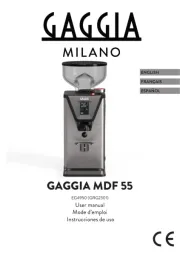
30 Juli 2025
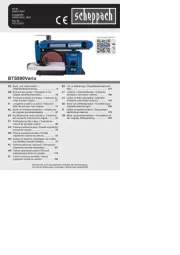
29 Juli 2025
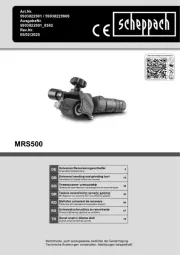
29 Juli 2025
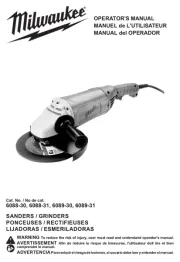
16 Juli 2025
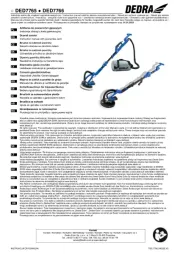
15 Juli 2025
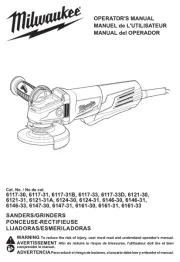
15 Juli 2025
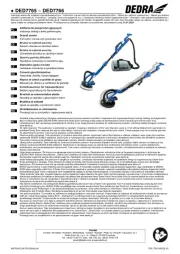
15 Juli 2025
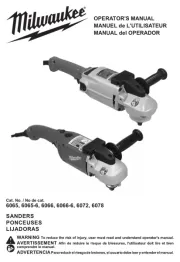
15 Juli 2025
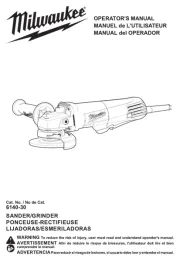
15 Juli 2025
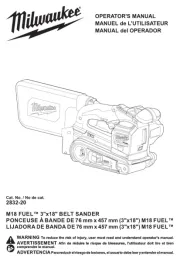
15 Juli 2025